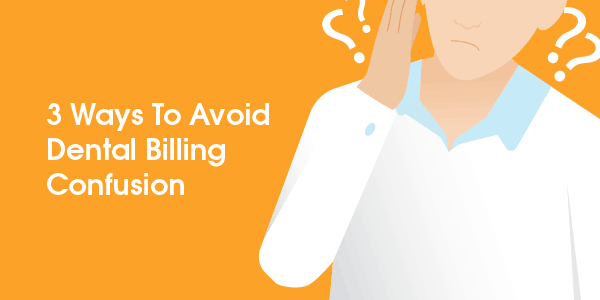Navigating the world of dental billing and insurance can be confusing. To avoid misunderstandings, it’s important to educate yourself on dental procedures and how dental billing works. There are a few things you can do that can help make navigating the world of dental treatment easier.
1. Ask For A Treatment Plan
To avoid being surprised by a large bill, it is essential to ask about the cost of treatment up front. Before you begin treatment, ask your dentist to provide you with a comprehensive treatment plan estimate that includes details on how much each service will cost. Keep in mind that recommended treatment can change once your dentist begins working on your teeth. If you don’t understand something, ask your dentist or dental office manager to explain it to you.
2. Know Your Insurance Benefits (If You Have Insurance)
Go to your dental insurance company’s website and look closely at your plan. Most dental plans have defined out-of-pocket costs for members, like coinsurance, copayments, and deductibles. If you don’t understand something or have questions, call your insurer and ask for more information.
While it may provide benefits for the basics, remember that dental insurance is not a guarantee of coverage or payment for services. There are a few things that are typically standard when it comes to insurance dental billing:
- Limitations on the number of times you can receive procedures such as routine dental cleanings, exams and x-rays.
- Insurance may not cover every dental service that your dentist suggests, and commonly provides a lower reimbursement rate for more expensive procedures such as root canals, crowns, and bridges.
- Time limits, waiting periods or “missing tooth clauses” for the replacement of prosthetics such as dentures and implants.
- Services such as orthodontics and fluoride treatments may be reimbursed only for children under the age of 19.
- An alternate benefit provision. If your dentist proposes a dental procedure, the plan may only cover another lower-cost dental service that provides a professionally acceptable result. For example, a plan may only cover a silver filling instead of a higher-cost white composite filling.
- Services for strictly cosmetic reasons are rarely covered by dental insurance.
- Most dental plans have an annual maximum and deductible. Once your annual maximum is reached, your plan will not cover any additional services until the start of the next plan year.
3. Consider Discount Dental Plans
A discount dental plan is not insurance, but might offer even more savings! With a discount dental plan, the plan contracts with a network of dentists who have agreed to provide care at discounted rates. Discount plans may also provide reduced rates on cosmetic procedures such as whitening or other services that may not be covered by insurance.
Speaking up and asking questions can help you get the quality care you need at a price you can afford. With thousands of dentists to choose from nationwide, your DentalSave membership can make going to the dentist more convenient and affordable. You can expect to save an average 45 percent off your total bill at the dentist, and avoid the hassle of dealing with insurance dental billing and claims. Members also have the freedom to shop around using fee schedules to find the lowest price for treatment.
Your DentalSave membership can help you save on cosmetic procedures such as veneers and whitening as well. We offer 25 percent off non-listed fees and additional discounts on vision, hearing and prescriptions. The average cost of a resin laminate veneer is $667, but as a DentalSave member, you pay only $367, giving you a savings of $300. Prices may vary depending on location and your provider’s fees.




